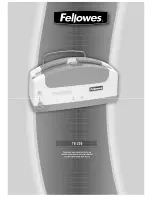
One of most difficult problems to deal with is when the system will not boot up.
The symptom: No response when the power is turned on. (No LCD display, keys are not
accepted.)
Note:
1. Electrical continuity may have existed at the factory check, but a
faulty contact occurred as a result of vibration, etc., during
transport.
2. Solder waste remaining on the board may get caught under the IC
during transport, causing a short circuit.
Before we begin mass production, several hundred trial units are produced at the plant, various
tests are applied and any malfunctions are analyzed. (In past experiences, digital IC (especially
SRAM and ROM) malfunctions are extremely rare after installation in the product.) / This may be
repaired by replacing the IC, (ASIC etc.). However, the real cause may not have been an IC
malfunction but a soldering fault instead. / Soldering faults which are difficult to detect with the
naked eye are common, particularly for an ASIC and RA (Resistor Array). But if you have an
oscilloscope, you can easily determine the problem site or IC malfunction by checking the main
signal lines. / Even if you don't have such a measuring instrument, by checking each main
signal line and resoldering it, in many cases the problem will be resolved. / An explanation of
the main signals (for booting up the unit) is below.
What are the main signals for booting up the unit?
Please refer to the
DIGITAL BLOCK DIAGRAM
(). / The ASIC (including the CPU) (IC1) controls
all the other digital ICs. When the power is turned on, the ASIC (CPU) retrieves the operation
code stored in the ROM (IC2), then follows the instructions for controlling each IC. All ICs have
some inner registers that are assigned to a certain address. / It is the address bus by which the
ASIC (CPU) designates the location inside each IC. And the data bus reads or writes the data in
order to transmit the instructions from the ASIC (CPU) to the ICs. / These signal lines are all
controlled by voltages of 5V (H) / 3.3V (H) or 0V (L).
2.3.6.1. DIGITAL BLOCK DIAGRAM
The signal lines that must be normal for the system to boot up are listed here [List 1]. / For
signal lines other than these, even if they malfunction they do not directly affect booting up the
system.
74
Summary of Contents for KX-FT71LA-B
Page 10: ...1 11 2 CCIT NO 2 TEST CHART 10 ...
Page 11: ...1 12 LOCATION OF CONTROLS 1 12 1 OVERVIEW 11 ...
Page 22: ...22 ...
Page 32: ...4 Close the cover securely by pushing down on both sides 32 ...
Page 33: ...5 Tear off the excess paper by pulling it towards you 33 ...
Page 41: ...CROSS REFERENCE SENSOR SECTION DISASSEMBLY INSTRUCTIONS 2 3 4 3 MULTIPLE FEED 41 ...
Page 42: ...CROSS REFERENCE DISASSEMBLY INSTRUCTIONS 2 3 4 4 SKEW 42 ...
Page 43: ...CROSS REFERENCE DISASSEMBLY INSTRUCTIONS 2 3 4 5 IMAGE IS DISTORTED WHEN PRINTING 43 ...
Page 45: ...CROSS REFERENCE DIGITAL BOARD SECTION TEST FUNCTIONS 2 3 4 7 SKEWED RECEIVING IMAGE 45 ...
Page 47: ...CROSS REFERENCE DISASSEMBLY INSTRUCTIONS 47 ...
Page 59: ...Error code table 59 ...
Page 62: ...62 ...
Page 63: ...CROSS REFERENCE TEST FUNCTIONS 63 ...
Page 64: ...CROSS REFERENCE TEST FUNCTIONS 64 ...
Page 65: ...CROSS REFERENCE TEST FUNCTIONS 65 ...
Page 66: ...CROSS REFERENCE TEST FUNCTIONS 66 ...
Page 67: ...67 ...
Page 68: ...68 ...
Page 69: ...69 ...
Page 75: ...Normal Wave Patterns 75 ...
Page 78: ...CROSS REFERENCE NG EXAMPLE CHECK THE STATUS OF THE DIGITAL BOARD 78 ...
Page 79: ...CROSS REFERENCE CHECK THE STATUS OF THE DIGITAL BOARD 2 3 6 2 NG EXAMPLE 79 ...
Page 84: ...84 ...
Page 85: ...85 ...
Page 86: ...86 ...
Page 92: ...2 4 3 USER MODE The list below is an example of the SYSTEM SETUP LIST the unit prints out 92 ...
Page 93: ...Note The above values are the default values 2 4 4 SERVICE FUNCTION TABLE 93 ...
Page 104: ...3 2 HOW TO REMOVE THE OPERATION BLOCK 104 ...
Page 105: ...3 3 HOW TO REMOVE THE OPERATION BOARD AND LCD 105 ...
Page 106: ...3 4 HOW TO REMOVE THE BOTTOM FRAME AND ANALOG BOARD 106 ...
Page 107: ...3 5 HOW TO REMOVE THE DIGITAL POWER SUPPLY BOARD AND AC INLET 107 ...
Page 108: ...3 6 HOW TO REMOVE THE MOTOR BLOCK AND SEPARATION ROLLER 108 ...
Page 109: ...3 7 HOW TO REMOVE THE MOTOR AND GEARS OF MOTOR BLOCK 109 ...
Page 110: ...3 8 HOW TO REMOVE THE IMAGE SENSOR CIS 110 ...
Page 111: ...3 9 HOW TO REMOVE THE DOCUMENT FEED ROLLER 111 ...
Page 112: ...3 10 HOW TO REMOVE THE THERMAL HEAD 112 ...
Page 113: ...3 11 INSTALLATION POSITION OF THE LEAD WIRES 113 ...
Page 117: ...4 4 BRIDGE MODIFICATION PROCEDURE 5 CIRCUIT OPERATIONS 5 1 CONNECTION DIAGRAM 117 ...
Page 122: ...38 VSS DG Ground 122 ...
Page 140: ...5 4 6 3 2 SCANNING CROSS REFERENCE SENSOR SECTION 5 4 6 3 3 PRINTING 140 ...
Page 141: ...Note See 6 5 SENSERS AND SWITCHES 5 4 6 3 4 COPYING 141 ...
Page 163: ...8 CABINET MECHANICAL AND ELECTRICAL PARTS LOCATION 8 1 OPERATION PANEL SECTION 163 ...
Page 164: ...164 ...
Page 165: ...8 2 UPPER CABINET SECTION 165 ...
Page 166: ...8 3 LOWER CABINET P C B SECTION CROSS REFFERENCE MOTOR SECTION 8 4 MOTOR SECTION 166 ...
Page 167: ...8 5 ACTUAL SIZE OF SCREWS 167 ...
Page 168: ...9 ACCESSORIES AND PACKING MATERIALS 10 REPLACEMENT PARTS LIST 168 ...
Page 179: ...L3 PQ4R10XJ000 0 S 179 ...
















































